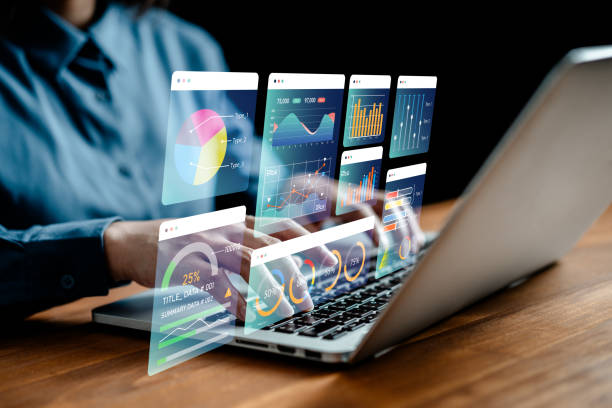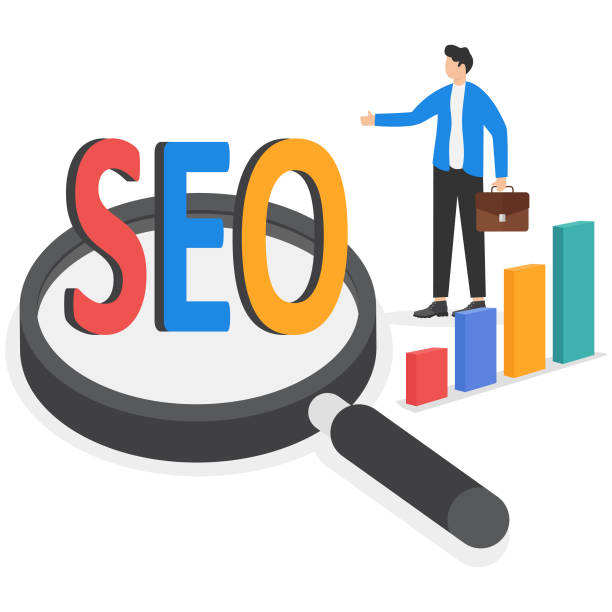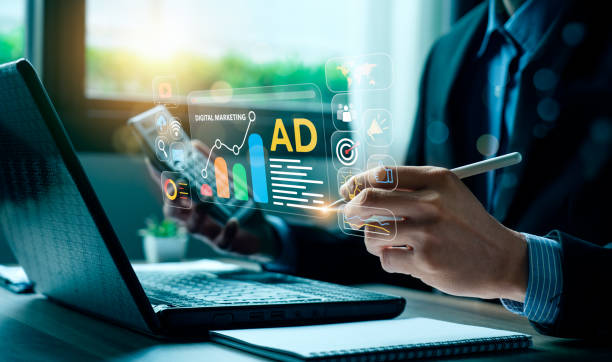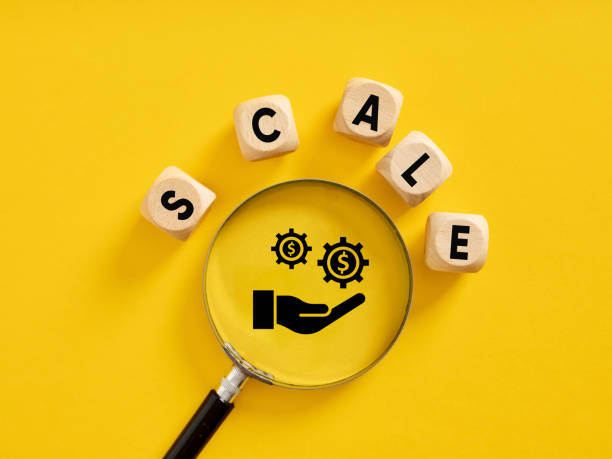What is On-Page SEO and why is it important?

What is On-Page SEO and why is it important?
#On_Page_SEO refers to a set of actions performed within a website to improve its ranking in search engine results.
These actions include optimizing content, site structure, HTML tags, and other related factors.
The importance of On-Page SEO stems from the fact that search engines like Google pay special attention to internal site factors for ranking websites.
A website with strong On-Page SEO helps search engines better understand the site’s content and display it to relevant users.
On-Page SEO also improves user experience, as well-optimized sites usually load faster, have a better structure, and offer more relevant content.
In other words, On-Page SEO plays a key role in attracting organic traffic and increasing online visibility.
Credible sources show that focusing on On-Page SEO can significantly improve a site’s ranking.
In fact, On-Page SEO is the first step to being seen in the online world.
If your site is not well optimized for search engines, even with high-quality content, you may not be able to achieve a good ranking.
On-Page SEO is the foundation of SEO success, and without it, other efforts in off-page SEO and content marketing may not yield desired results.
In summary, On-Page SEO involves actions that help search engines better understand your site and display it to relevant users, thereby improving your site’s ranking and increasing organic traffic.
On-Page SEO is a long-term investment that brings sustainable and valuable results.
Optimal use of On-Page SEO means having a website with a professional and user-friendly structure
Are you tired of losing business opportunities due to not having a professional corporate website?
Rasawweb helps you by designing a professional corporate website:
✅ Build a powerful and reliable brand image
✅ Convert website visitors into loyal customers
⚡ Get a free consultation now!
Keyword Research – The Backbone of On-Page SEO

Keyword Research – The Backbone of On-Page SEO
Keyword research is one of the most important steps in On-Page SEO.
This process involves identifying words and phrases that users enter into search engines to find information related to your business.
By identifying these keywords, you can optimize your site’s content to rank higher in search results.
To start keyword research, you should first prepare a list of core topics related to your business.
Then, use various tools such as Ubersuggest, Google Keyword Planner, and Ahrefs to find keywords related to these topics.
In this process, pay attention to search volume, competition, and the relevance of keywords to your business.
Choosing appropriate keywords requires accuracy and careful consideration.
On-Page SEO means using these keywords correctly in the right place.
After identifying keywords, you should incorporate them into your site’s content.
This should be done naturally and without overdoing it.
Use keywords in page titles, meta descriptions, headings (H1, H2, H3), and the main body of the content.
Also, note that your content should be valuable and relevant to the keywords.
Google aims to provide the best results to users, so your content should meet their needs.
There are numerous educational articles available in this field that you can benefit from.
The use of Long-Tail Keywords is also very important in On-Page SEO.
These keywords are longer phrases that typically have lower search volume but higher conversion rates.
For example, instead of the keyword “sports shoes”, use the phrase “buy men’s running sports shoes.”
These types of keywords attract more targeted users.
Your On-Page SEO is complete when you can utilize the full potential of keywords.
Optimizing Titles and Meta Descriptions

Optimizing Titles and Meta Descriptions
Titles and meta descriptions are two important elements in On-Page SEO that are displayed in search results.
The page title (Title Tag) should be attractive, relevant, and include the main keyword.
The title length should be between 50 and 60 characters to be fully displayed in search results.
An appropriate title encourages users to click on your link.
On-Page SEO requires that your page titles are completely relevant to their content.
The meta description is a brief summary of the page’s content displayed below the title in search results.
The meta description should be appealing, engaging, and include a Call to Action.
The meta description length should be between 150 and 160 characters.
The meta description should accurately describe the page’s content and persuade users to click on your link.
On-Page SEO optimization in this section is very important.
To optimize titles and meta descriptions, pay attention to the following points:
- Use main keywords in titles and meta descriptions.
- Titles and meta descriptions should be appealing and engaging.
- Titles and meta descriptions should accurately describe the page’s content.
- Use a Call to Action in the meta description.
- Observe the appropriate length for titles and meta descriptions.
Below is an example table comparing appropriate and inappropriate meta titles:
| Feature | Inappropriate Meta Title | Appropriate Meta Title |
|---|---|---|
| Includes Keyword | No | Yes |
| Attractiveness to User | Low | High |
| Relevance to Content | Weak | Strong |
| Appropriate Length | No (Too long or too short) | Yes (between 50-60 characters) |
| Call to Action | No | Yes (if possible) |
By optimizing titles and meta descriptions, you can increase your Click-Through Rate (CTR) in search results and attract more traffic to your site.
Strong On-Page SEO is not possible without optimizing these elements.
Content Optimization – The Heart of On-Page SEO

Content Optimization – The Heart of On-Page SEO
Content is king! This famous saying in the world of SEO perfectly demonstrates the importance of content.
High-quality, valuable, and relevant content is one of the most important factors in website ranking in search results.
Your content should meet users’ needs, answer their questions, and provide useful information.
Successful On-Page SEO is accompanied by the production of valuable content.
To optimize content, pay attention to the following points:
- Your content should be unique and original.
Avoid copying content from others. - Your content should be relevant to the main keywords.
Use keywords naturally and without overdoing it in the text. - Your content should be readable and understandable.
Use short and simple sentences. - Make your content engaging with images, videos, and other multimedia elements.
- Update your content regularly.
Producing longer content (Long-Form Content) is usually more effective in On-Page SEO.
Longer content provides more opportunities to fully cover a topic and use relevant keywords.
However, note that your content should still be valuable and engaging.
Professional On-Page SEO requires professional content creation.
The use of headings (H1, H2, H3) is also very important in content optimization.
Headings help search engines understand the content structure and identify the importance of different sections.
Use main keywords in your headings.
Content optimization is one of the main pillars of On-Page SEO, and without it, you cannot achieve a good ranking in search results.
On-Page SEO is nothing but high-quality content that is properly arranged.
Did you know that 94% of users’ first impressions of a business are related to its website design? With professional corporate website design by **Rasawweb**, turn this first impression into an opportunity for growth.
✅ Attract more customers and increase sales
✅ Build credibility and trust in the audience’s eyes⚡ Get a free website design consultation!
Image Optimization

Image Optimization
Images play an important role in website attractiveness and user experience.
However, unoptimized images can slow down site loading speed and negatively impact SEO.
Image optimization includes reducing file size, using the appropriate format, and adding Alt Text.
On-Page SEO for images means reducing size and correctly using the alt tag.
To optimize images, pay attention to the following points:
- Reduce image file sizes.
Use image compression tools like TinyPNG or ImageOptim. - Use the appropriate format for images.
JPEG format is suitable for photos, and PNG format is suitable for graphic images. - Add Alt Text for all your images.
Alt text should accurately describe the image content and include relevant keywords. - Optimize image file names.
Use descriptive names that include keywords.
By optimizing images, you can increase your site’s loading speed, improve user experience, and enhance your site’s ranking in search results.
Google places a great deal of importance on site loading speed, and this is one of the important ranking factors, so take image On-Page SEO seriously.
Using high-quality images is also important in On-Page SEO.
High-quality images increase the visual appeal of the site and keep users on the site longer.
However, note that high-quality images usually have larger file sizes, so you need to strike a balance between quality and file size.
Image optimization is an integral part of On-Page SEO.
URL Structure Optimization

URL Structure Optimization
URL structure is another important factor in On-Page SEO.
Your URLs should be short, descriptive, and include keywords.
Long and complex URLs are not easily understood by search engines or users.
Optimizing URL structure can help improve your site’s ranking in search results.
Professional On-Page SEO is recognized by the correct link structure.
To optimize URL structure, pay attention to the following points:
- Keep your URLs short and descriptive.
- Use keywords in URLs.
- Use hyphens (-) instead of underscores (_) in URLs.
- Use lowercase letters in URLs.
- Design your site’s URL structure to be logical and organized.
Your site’s URL structure should reflect your site’s organization.
For example, if your site has different sections such as articles, products, and services, your URLs should reflect this structure.
A logical and organized URL structure helps search engines and users navigate your site easily.
For example, the URL for an article titled “On-Page SEO Guide” could be as follows:
www.example.com/blog/on-page-seo-guide
This URL is short, descriptive, and includes the keyword “On-Page SEO.”
Optimizing URL structure is an important step towards successful On-Page SEO.
On-Page SEO and URL structures have a close relationship with each other.
Internal Linking – A Way to Improve On-Page SEO

Internal Linking – A Way to Improve On-Page SEO
Internal linking means creating links between different pages within your own website.
This helps search engines better understand your site’s structure and identify more important pages.
Internal linking also helps users navigate your site easily and gain more information.
Internal linking is one of the main pillars of On-Page SEO.
For internal linking, pay attention to the following points:
- Link to more important pages on your site.
- Use appropriate Anchor Text for links.
Anchor text should be relevant to the content of the destination page. - Link to topic-related pages.
- Perform internal linking naturally and without overdoing it.
Internal linking can help improve your site’s ranking in search results.
By linking to more important pages on your site, you show search engines that these pages have greater importance.
Also, by linking to topic-related pages, you help search engines understand the connections between pages.
On-Page SEO with internal linking is a complete process.
| Feature | Appropriate Internal Linking | Inappropriate Internal Linking |
|---|---|---|
| Page Relevance | Relevant | Irrelevant |
| Anchor Text | Relevant and descriptive | Generic and irrelevant |
| Number of Links | Reasonable and natural | Excessive and unnatural |
| Link Purpose | User guidance and SEO improvement | Solely for SEO and no value to the user |
Remember that the main goal of internal linking is to improve user experience and help search engines better understand your site’s structure.
On-Page SEO means providing the best user experience.
Website Speed Optimization

Website Speed Optimization
Site loading speed is one of the most important factors in SEO and user experience.
Users expect your site’s pages to load within a few seconds.
If your site is slow, users may leave your site and go to another site.
Additionally, Google considers site speed as a ranking factor.
Optimizing site speed is a critical factor in On-Page SEO.
To optimize site speed, pay attention to the following points:
- Use a high-quality hosting service.
- Optimize your images.
- Use an optimized Content Management System (CMS).
- Use fewer plugins.
- Optimize your HTML, CSS, and JavaScript code.
- Use caching.
By optimizing site speed, you can improve user experience, reduce bounce rate, and enhance your site’s ranking in search results.
Site loading speed is directly related to On-Page SEO.
Google PageSpeed Insights is a useful tool for testing and optimizing site speed.
Google has stated that site loading speed is one of the important factors in website ranking.
Therefore, optimizing site speed is a valuable investment that can help improve your site’s SEO and user experience.
On-Page SEO is nothing but continuous optimization.
Research shows that 80% of customers trust companies with professional websites more. Does your current site inspire this trust?
With Rasawweb’s corporate website design services, permanently solve the problem of customer mistrust and a weak online image!
✅ Create a professional image and increase customer trust
✅ Attract more sales leads and business growth⚡ Get a free consultation
Responsive Design
![]()
Responsive Design
Responsive design means that your site should automatically adapt to the screen size of various devices (such as computers, tablets, and mobile phones).
Given that most users today access the internet via mobile phones, having a responsive website is crucial.
Google also prioritizes responsive websites and ranks them higher in search results.
Responsiveness is one of the most important aspects of On-Page SEO.
To ensure your site is responsive, you can use Google’s Mobile-Friendly Test tool.
This tool shows you how your site appears on mobile devices and what issues it has.
Having a responsive design is considered a principle of On-Page SEO.
Responsive design not only helps improve SEO but also enhances user experience.
Users should be able to easily navigate your site and find the information they need using any device.
On-Page SEO has a direct relationship with responsive design.
If your site is not yet responsive, you should update it as soon as possible.
Responsive design is a necessary investment that can help improve SEO, user experience, and ultimately the success of your business.
Responsive design is the first step in On-Page SEO.
Using Schema Markup for On-Page SEO

Using Schema Markup for On-Page SEO
Schema Markup is a type of code you can add to your web pages to provide search engines with more information about the page’s content.
This information can include content type (e.g., article, product, event), author, publication date, and other details.
Using Schema Markup can help improve your site’s appearance in search results and increase its Click-Through Rate (CTR).
Schema Markup is a powerful tool in On-Page SEO.
By using Schema Markup, you can provide accurate and structured information about your business to search engines.
This helps search engines better understand your site and display it to relevant users.
Using Schema Markup is an effective method for improving On-Page SEO.
Advanced On-Page SEO requires the use of Schema Markup.
To use Schema Markup, you can use the Schema Markup Generator tool.
This tool helps you easily create the Schema Markup codes you need.
Then, add these codes to your web pages.
By using Schema Markup, you can elevate your site’s On-Page SEO to a higher level.
Remember that Schema Markup is just one tool, and for successful On-Page SEO, you must also pay attention to other factors.
However, using Schema Markup can help improve your site’s appearance in search results and attract more traffic to your site.
Frequently Asked Questions
| Question | Answer |
|---|---|
| What is On-Page SEO? | It refers to a set of actions performed within a website to improve its ranking in search engines. |
| Why is On-Page SEO important? | Because it helps search engines better understand your site’s content and structure, and improves user experience. |
| What are the most important elements of On-Page SEO? | Titles and meta descriptions, keywords, URL structure, quality content, image optimization, internal linking, and site speed. |
| How to optimize Title Tags and Meta Descriptions? | The title should include the main keyword and be engaging, and the meta description should be a compelling summary of the content with relevant keywords. |
| What is the role of keywords in On-Page SEO? | Keywords inform search engines about the page’s content and should be used naturally and intelligently in the text. |
| How is image optimization for On-Page SEO performed? | By compressing the size, using descriptive file names, and filling the Alt tag with relevant descriptions and keywords. |
| What is Internal Linking and what is its use? | It is the connection of different pages within a site. This helps distribute Page Authority and improves search engine crawling. |
| What is the importance of site loading speed in On-Page SEO? | High speed improves user experience and is an important ranking factor for search engines like Google. |
| What effect does site responsiveness (Mobile-Friendliness) have on On-Page SEO? | Given the increase in mobile users, responsiveness is essential for providing a suitable user experience across all devices and for Google’s mobile-first indexing priority. |
| What are the important content-related factors in On-Page SEO? | Originality, quality, comprehensiveness, readability, proper use of headings (H1, H2,…), and regular content updates. |
And other services of Rasawweb Advertising Agency in the field of advertising
- Smart Reportage: A creative platform for improving customer acquisition with marketing automation.
- Smart Customer Journey Map: A dedicated service for growth in click-through rate increase based on marketing automation.
- Smart Customer Journey Map: A fast and efficient solution for increasing website traffic with a focus on marketing automation.
- Smart Reportage: A fast and efficient solution for increasing website traffic with a focus on custom programming.
- Smart UI/UX: Designed for businesses looking to increase click-through rates through marketing automation.
And over hundreds of other services in the field of internet advertising, advertising consultation, and organizational solutions
Internet Advertising | Advertising Strategy | Advertorials
Resources
On-Page SEO Training
What is On-Page SEO?
On-Page SEO and its Importance in Website Optimization
What is On-Page SEO and How is it Done?
? To reach the peaks of success in the online world and experience unparalleled sales, Rasawweb Afarin Digital Marketing Agency paves your way with its specialized services, including advanced e-commerce website design.
📍 Tehran, Mirdamad Street, next to Bank Markazi, Kazeroun Jonubi Alley, Ramin Alley, No. 6



